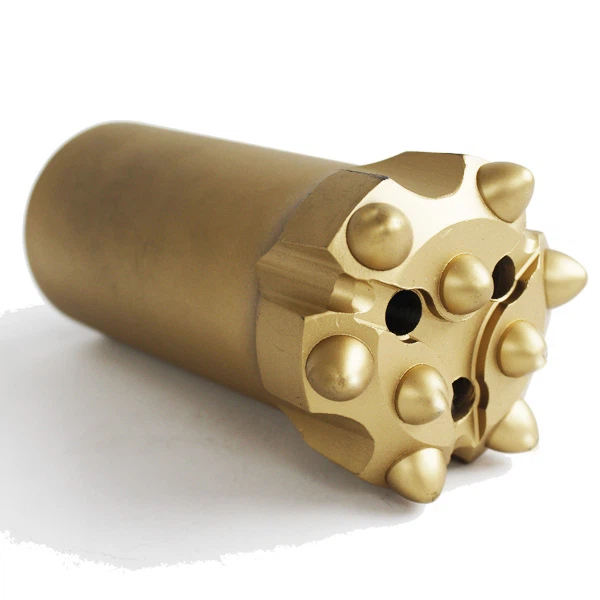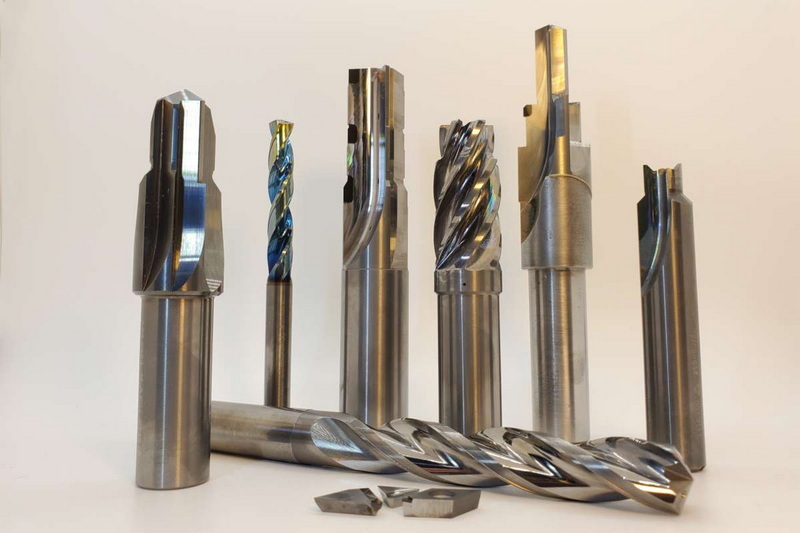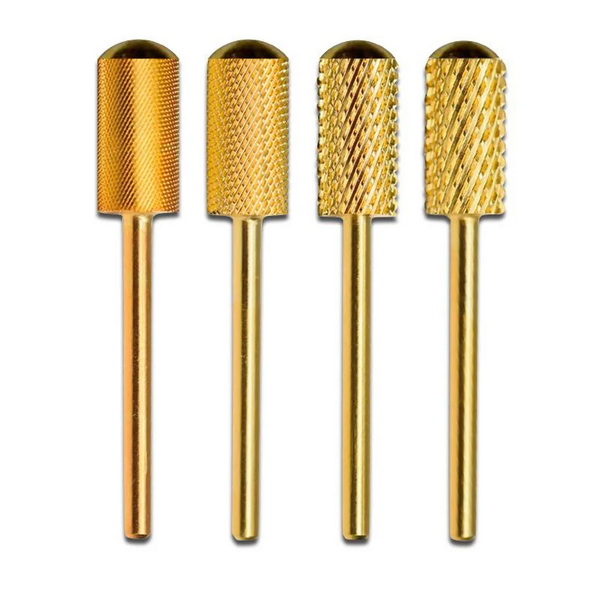Content Menu
● Introduction to Carbon and Carbide Materials
>> Carbon Fiber
>>> Applications of Carbon Fiber in Oil Drilling
>> Carbide Materials
>>> Applications of Carbide Materials in Oil Drilling
● Benefits of Carbon and Carbide Materials in Oil Drilling
>> Enhanced Durability
>> Cost Efficiency
>> Environmental Sustainability
>> Enhanced Safety
● Future Prospects and Innovations
>> Emerging Trends
● Case Studies and Examples
● Challenges and Limitations
● Regulatory Frameworks
● Conclusion
● Frequently Asked Questions
>> 1. What makes carbon fiber ideal for deepwater drilling applications?
>> 2. How does tungsten carbide enhance drilling efficiency in oil wells?
>> 3. What are the environmental benefits of using carbon fiber composites in oil drilling?
>> 4. How do carbide coatings protect drilling equipment?
>> 5. What role does activated carbon play in the oil and gas industry?
● Citations:
The oil drilling industry is one of the most challenging and demanding sectors globally, requiring materials that can withstand extreme conditions such as high temperatures, corrosive environments, and immense pressure. Among these materials, carbon and carbide products have emerged as crucial components due to their exceptional strength, durability, and resistance to wear and corrosion. This article explores the significance of carbon and carbide materials in oil drilling, highlighting their applications, benefits, and future prospects.

Introduction to Carbon and Carbide Materials
Carbon Fiber
Carbon fiber, a lightweight yet incredibly strong material, is widely used in the oil and gas industry. It is about 20 times stronger than steel for the same weight, making it ideal for reinforcing structures like rigid risers in deepwater drilling applications. Carbon fiber composites offer more stiffness and strength with less weight, enabling deepwater exploration at depths previously unreachable with traditional materials like steel.
Applications of Carbon Fiber in Oil Drilling
1. Deepwater Exploration: Carbon fiber is used to create lightweight yet robust components for offshore drilling equipment, reducing installation costs and downtime.
2. Corrosion Resistance: Carbon fiber composites are resistant to corrosion, which is essential for maintaining the integrity of equipment in harsh marine environments.
3. Reduced Maintenance: The lightweight nature of carbon fiber reduces the strain on equipment, leading to less wear and tear over time.
Carbide Materials
Tungsten carbide, a compound of tungsten and carbon, is renowned for its hardness and wear resistance. It is extensively used in drilling tools, such as drill bits and cutting tools, due to its ability to withstand high pressures and abrasive conditions.
Applications of Carbide Materials in Oil Drilling
1. Drilling Tools: Tungsten carbide is used in drill bits and cutting tools to enhance drilling efficiency and extend tool life in harsh environments.
2. Equipment Protection: Carbide coatings protect drilling equipment from wear and corrosion, extending their lifespan and reducing maintenance costs.
3. High-Performance Drilling: The hardness of tungsten carbide allows for faster drilling rates and improved penetration in hard rock formations.
Benefits of Carbon and Carbide Materials in Oil Drilling
Enhanced Durability
Both carbon and carbide materials offer superior durability compared to traditional materials. Carbon fiber composites reduce the risk of structural failure under extreme conditions, while tungsten carbide tools withstand high-impact drilling without significant wear.
Cost Efficiency
Despite higher initial costs, carbon and carbide products are cost-effective in the long run. They reduce maintenance and replacement needs, minimizing downtime and operational expenses. This leads to significant savings over the lifecycle of drilling operations.
Environmental Sustainability
Carbon fiber composites are more environmentally friendly as they reduce the weight of structures, leading to lower energy consumption during transportation and installation. Additionally, their corrosion resistance minimizes the risk of environmental hazards like leaks. Tungsten carbide, while not biodegradable, reduces waste by extending tool life and reducing the need for frequent replacements.
Enhanced Safety
The use of carbon and carbide materials also enhances safety in drilling operations. By reducing the risk of equipment failure, these materials help prevent accidents that could lead to injuries or environmental damage.

Future Prospects and Innovations
As the oil and gas industry continues to evolve, the demand for advanced materials like carbon and carbide will grow. Innovations in manufacturing processes and material properties are expected to further enhance their performance and sustainability. For instance, advancements in nanotechnology could lead to even stronger and more durable carbide materials.
Emerging Trends
1. 3D Printing: The integration of 3D printing technology with carbon and carbide materials could revolutionize the production of complex drilling tools and components, offering faster production times and customized designs.
2. Sustainable Materials: Research into sustainable alternatives to traditional carbide materials, such as using recycled tungsten, could reduce environmental impact while maintaining performance.
3. Advanced Composites: The development of new composite materials combining carbon fiber with other advanced materials may offer even greater strength and durability for future drilling applications.
Case Studies and Examples
Several companies have successfully integrated carbon and carbide products into their drilling operations, achieving significant improvements in efficiency and cost savings. For example, a major oil company used carbon fiber reinforced risers to reduce installation time by 30% in a deepwater project, resulting in substantial cost savings. Another company utilized tungsten carbide drill bits to increase drilling speed by 25% in a challenging rock formation, reducing overall drilling time and enhancing profitability.
Challenges and Limitations
Despite their advantages, carbon and carbide materials face challenges such as high production costs and limited availability of raw materials. Additionally, the recycling of these materials remains a complex issue, requiring further research and development. However, ongoing innovations and investments in technology are expected to address these challenges and make these materials more accessible and sustainable.
Regulatory Frameworks
The use of carbon and carbide materials in oil drilling is subject to various regulatory frameworks aimed at ensuring safety and environmental protection. Compliance with these regulations is crucial for companies operating in this sector, as it not only ensures legal compliance but also enhances public trust and corporate reputation.
Conclusion
In conclusion, carbon and carbide materials are indispensable in the oil drilling industry due to their exceptional strength, durability, and resistance to corrosion and wear. Their applications range from deepwater exploration to drilling tools, offering significant benefits in terms of cost efficiency and environmental sustainability. As technology advances, these materials will continue to play a critical role in shaping the future of oil drilling.

Frequently Asked Questions
1. What makes carbon fiber ideal for deepwater drilling applications?
Carbon fiber is ideal for deepwater drilling due to its high strength-to-weight ratio, allowing for the creation of lightweight yet robust structures that can withstand extreme conditions without compromising on strength.
2. How does tungsten carbide enhance drilling efficiency in oil wells?
Tungsten carbide enhances drilling efficiency by providing exceptional hardness and wear resistance, enabling drill bits to withstand high-impact drilling and abrasive conditions, thus extending tool life and reducing downtime.
3. What are the environmental benefits of using carbon fiber composites in oil drilling?
Carbon fiber composites reduce the risk of environmental hazards like leaks due to their corrosion resistance. Additionally, they lower energy consumption during transportation and installation by reducing the weight of structures.
4. How do carbide coatings protect drilling equipment?
Carbide coatings protect drilling equipment by providing a layer of wear-resistant material that shields against corrosion and abrasion, extending the lifespan of components and reducing maintenance costs.
5. What role does activated carbon play in the oil and gas industry?
Activated carbon is used in oil and gas refineries to remove impurities from gases and liquids, ensuring compliance with environmental regulations and extending equipment life by minimizing corrosive contaminants.
Citations:
[1] https://www.teijincarbon.com/markets/oil-and-gas/
[2] https://zoltek.com/applications/oil-and-gas-offshore-drilling/
[3] https://www.drillbitwarehouse.com/the-ultimate-guide-to-different-drill-bit-materials/
[4] https://www.alamy.com/stock-photo/tungsten-carbide-tool.html
[5] https://www.compositesone.com/safely-extracting-oil-and-gas-with-composites/
[6] https://samhotool.com/blog/carbide-drill-bit/
[7] https://www.tdmfginc.com/tungsten-carbide/tungsten-carbide-cobalt/tungsten-carbide-drilling-tool-for-mining-and.html
[8] https://www.cabotcorp.com/~/media/files/brochures/specialty-carbon-blacks/brochure-specialty-carbon-blacks-fumed-silicas-for-oil-gas-applications.pdf
[9] https://primatooling.co.uk/breaking-down-the-benefits-of-carbide-drills/
[10] https://www.linde-amt.com/resource-library/articles/tungsten-carbide
[11] https://www.cnccookbook.com/carbide-drill-bits-ultimate-guide-for-precision-drilling/
[12] https://www.nmfiltermedia.com/role-of-activated-carbon-in-oil-gas
[13] https://www.bakerhughes.com/drilling/drilling-fluids/invert-emulsion-drilling-fluids/carbodrill-oilbased-drilling-fluid
[14] https://www.retopz.com/57-frequently-asked-questions-faqs-about-tungsten-carbide/
[15] https://www.litechtools.com/tungsten-carbide-vs-traditional-materials-the-advantages.html
[16] http://www.cocangraphite.com/applications_detail/3.html
[17] https://www.coorstek.com/en/industries/energy/oil-gas-and-chemicals/
[18] https://www.linkedin.com/pulse/breaking-down-benefits-carbide-drills-industrial-debra-cattle-22ole
[19] https://info.qii.ai/blog/why-carbon-steel-is-essential-in-the-oil-and-gas-industry
[20] https://www.tdmfginc.com/tungsten-carbide/tungsten-carbide-cobalt/tungssten-carbide-nozzles-for-oil-well.html
[21] https://jaibros.com/blogs/from-our-blog/top-reasons-to-switch-to-carbide-drill-bits-today
[22] https://www.sciencedirect.com/science/article/pii/S2238785421010656
[23] https://www.zgjrdcc.com/oil-drilling-process/
[24] https://ctpcryogenics.com/carbide-drill-bits/
[25] https://www.pumpsandsystems.com/applications-carbon-graphite-oil-gas-industry
[26] https://www.sciencedirect.com/topics/materials-science/carbide
[27] https://www.alamy.com/stock-photo/carbide-and-carbon.html?blackwhite=1
[28] https://www.istockphoto.com/photos/tungsten-carbide-drill-bits
[29] https://www.mmc-carbide.com/en_jp/products/rotating_tools/drills
[30] https://www.istockphoto.com/photos/carbon-footprint-oil-industry
[31] https://www.shutterstock.com/search/carbide-carbon?page=2
[32] https://www.mitsubishicarbide.net/mmus/enus/drilling/10000767/
[33] https://stock.adobe.com/search?k=oil+and+gas+industry+collage
[34] https://www.shutterstock.com/search/carbide-carbon
[35] https://www.instagram.com/hytha.cg/reel/CrqujdgAykW/
[36] https://stock.adobe.com/search?k=tungsten+carbide
[37] https://www.shutterstock.com/search/oil-gas-industry
[38] https://www.dreamstime.com/photos-images/carbon-drill.html
[39] https://www.istockphoto.com/photos/drill-bit
[40] https://science.howstuffworks.com/environmental/energy/5-innovations-oil-drilling.htm
[41] https://www.alibaba.com/product-detail/Tungsten-carbide-material-oil-water-and_60687868968.html
[42] https://www.meritbrass.com/oil-and-gas
[43] https://www.slb.com/resource-library/oilfield-review/defining-series/defining-bits
[44] https://www.rsclare.com/blog/carbon-capture-in-the-oil-and-gas-industry/
[45] https://www.battelle.org/markets/industry/energy/carbon-storage-solutions/carbon-sequestration-drilling
[46] https://www.cncmillingtools.com/carbide-drill-bits-common-problems-solutions-in-drilling/
[47] https://bergsen.com/proper-material-selection-for-oil-gas-industry-parts-and-equipment/
[48] https://www.kennametal.com/us/en/resources/blog/metal-cutting/how-to-choose-the-right-carbide-drill-bit.html
[49] https://www.petrosync.com/blog/faqs-of-oil-and-gas-drilling/
[50] https://www.elevatedmaterials.com/drilling-carbon-fiber/
[51] https://www.kennametal.com/us/en/products/metalworking-tools/holemaking/solid-carbide-drills.html
[52] https://www.alamy.com/stock-photo/union-carbide-corporation.html
[53] https://www.coorstek.com/en/industries/energy/oil-gas-and-chemicals/silicon-carbide-pdc-bit-displacers/
[54] https://osgtool.com/drilling/solid-drilling/composite-drills/
[55] https://blog.enerpac.com/grades-of-steel-for-oil-gas-applications/
[56] https://compositeenvisions.com/document/drilling-composites-what-to-look-out-for/
[57] https://www.nmfiltermedia.com/role-of-activated-carbon-in-oil-gas
















